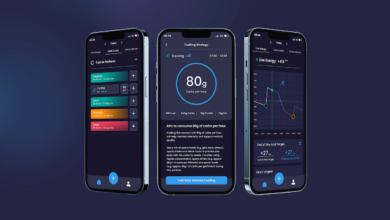From Data to Decision: The New Era of Analytics for Suppliers

The moment Clive Humby equated data to oil in 2006, he profoundly captured the essence of data’s value in the contemporary digital era. Yet, similar to how crude oil requires refinement, data in its raw form is comparatively inert.
This analogy is particularly pertinent for players in the consumer packaged goods and manufacturing sectors. The challenge of data scarcity has been superseded by an abundance of it. Presently, every progressive company amasses and stockpiles substantial data volumes through its operational avenues.
The central issue now lies in the dispersed, disjointed nature of this data, often locked away in archaic systems or isolated within departmental silos. In such a state, the data is underprepared to energize a company’s business operations.
For suppliers, the integration of data streams from various segments of the value chain can unveil a trove of rich, synthesized consumer insights, transcending traditional sales and performance figures. In the fast-paced, competitive realm of modern business, in-depth insights into consumer preferences, feedback, and purchasing patterns are vital. Nevertheless, amalgamating and effectively utilizing these insights promptly is a formidable task.
Reworking ‘Digital Crude’ into Practical Insights
Historically, visibility in supply chains was restricted to primary customers. Consequently, a CPG enterprise or manufacturer gains insights only into their direct customers’ activities. This limitation is reciprocal, implying that shifts occurring deeper in the value chain often surprise businesses. Further, restricted access to dynamic, real-time data analytics limits their capacity to respond swiftly to disruptions, such as product recalls, ESG non-compliance, or natural catastrophes.
Supply chain collaboration has seen substantial improvements over recent decades. Particularly in the aftermath of the pandemic, there has been a heightened appreciation for the importance of data sharing within the ecosystem. Firms across the supply chain have begun to open up their data through sophisticated platforms. However, for suppliers, effectively utilizing this data presents multiple challenges:
- Difficulty in aligning external data with their organizational frameworks, hindering insight extraction and subsequent actions
- Challenges in keeping up with the swift influx of data from partners, leading to overlooked discrepancies or disruptions in data flow to downstream systems
- The necessity for various custom Key Performance Indicators (KPIs) tailored to their decision-making needs, often differing significantly from the source systems’ metrics
- A lack of robust technical infrastructure to manage API feeds and substantial data volumes, resulting in data ingestion and integration issues
Transitioning from Data Compilation to Strategic Decisions With a Unified Platform
In today’s highly competitive market, real-time insights are not merely advantageous but essential for supplier triumph. Analyzing data to identify trends and address critical questions like “Which products are gaining traction?” “Is there a way to optimize transport routes?” “How can material shortages be averted?” is indispensable.
To convert these large data volumes into strategic assets, suppliers require an intelligent supply chain platform that facilitates decisions throughout the entire value chain.
A proficient and intelligent supply chain platform should furnish consistent, comprehensive, and superior-quality data, ensuring detailed, almost instantaneous visibility across the value chain. It should establish a peer-to-peer network, linking partners beyond the immediate clientele and suppliers.
The platform must expedite the integration of data sources with ready-to-use adapters and swiftly reformat this influx of data into company-specific structures for smooth integration with internal mechanisms. Advanced AI and ML capabilities and automation are crucial for maintaining continuous, synchronized data streams, ready for immediate analysis and decision-making with minimal non-essential manual intervention.
Intelligent platforms can refine every aspect of the supply chain, from procurement to distribution. They assist in pinpointing bottlenecks, suggesting more efficient transportation pathways, enhancing supply and production strategies, and fostering improved business results.
Take, for instance, a Fortune 500 consumer goods corporation that struggled with planning and fulfillment due to unreliable demand information from channel collaborators. By implementing a cloud-based data exchange platform to connect with partners in various markets, they facilitated seamless data sharing. This led to enhanced case-fill rates by 8-10% and a reduction in non-productive inventory by 3-4%.
Mastering Data: The Pinnacle of Supplier Achievement
To remain competitive in today’s market, agility is paramount for CPG and manufacturing companies. This agility, the ability to navigate disturbances and seize opportunities, is contingent upon mastering data-driven decision-making. Companies that skillfully employ advanced analytics will consistently deliver products timely, efficiently, and cost-effectively.



